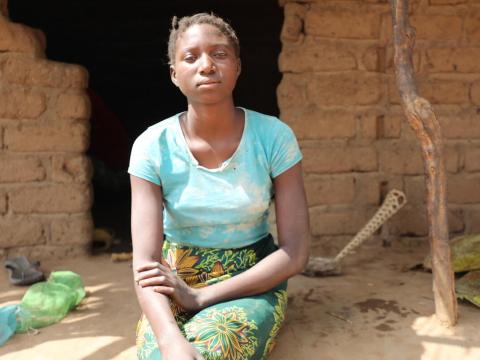Malnutrition costing women and girls over $1.6 trillion annually according to World Vision Report

- Without change, 3,107,059 girls will die in the next four years due to low birthweight and Vitamin A deficiencies. This includes 140,232 more babies dying every year due to low birthweight and 2,546,130 girls dying before age 5 due to Vitamin A deficiencies.
- Malnutrition costs women and girls $1,643,806,194,966.57 in lost income annually from stunting
- Without the effects of stunting and anaemia, 15.8 million more girls would complete secondary school every year.
NAIROBI October 10th, 2024 – Malnutrition costs the global economy over $1.6 trillion annually in lost productivity and potential, that is according to a new report by international aid agency, World Vision, launched in the lead up to World Food Day (October 16th).
Breaking the Cycle: The Cost of Malnutrition to Girls highlights the huge impact malnutrition has on girls’ lives, education, future earnings, and likelihood to experience violence and stress. More than 3 million baby girls are unlikely to make it to their fifth birthday, solely due to Vitamin A deficiency and low birthweight. Almost 16 million of those who survive to adolescence are unlikely to complete secondary school. Food insecurity, and a preference for male children in some countries, means that in many countries girls are more likely to be hungry or malnourished than boys, even in their own families. When their health, school or job performance is impacted by malnutrition, traditional gender norms amplify the impact and girls become more likely to lose their lives, not complete school, earn less, marry earlier, and have more children sooner.
“Often when we talk about hunger, people picture the famines of the 1980s,” Dana Buzducea, Partnership lead for advocacy and external engagement at World Vision International. “Since COVID-19, the impact of the economic crisis, climate change and conflict has spurred an alarming increase in the number of children and families living in famine-like conditions or being severely malnourished. That is why World Vision’s global campaign ENOUGH focuses to tackling the root causes of hunger and our new report highlights the enormous costs of malnutrition to girls in every country on the globe, as no country has eliminated malnutrition.” added Buzducea.
Today, more than one billion adolescent girls and women suffer from different forms of malnutrition. Women and girls make up 60% of the world’s chronically malnourished and suffer most due to climate, economic, and conflict related shocks; during the COVID-19 pandemic, the gender gap in food insecurity [1] (difference between the number of women affected by malnutrition, compared to men) more than doubled from 49 million to 126 million, as the pandemic exacerbated inequalities and wreaked havoc on women and girls’ ability to work, support themselves and access nutritious food.
“The number of people going to bed hungry and living with the long-term effects of malnutrition shot up during the pandemic and have not gone down. This is after years of success in reducing hunger. People who cannot feed their children are left with little choice but to leave their countries and seek survival elsewhere.” said Buzducea. “If we do not act now, every year more people will be forced into migration, millions of girls will miss out on their education, trillions of dollars will be lost in economic potential, and young mothers and their children will be at increased risk of death. Those that survive will pay lifelong costs for malnutrition, that if not addressed, will be passed on to their own children in a vicious cycle.”
ENDS.
For further information please contact:
Report available to download here
Interactive Data set with country and global figures: https://www.wvi.org/world-food-day/report/cost-malnutrition-girls/data
The costs in the report and interactive data are based on freely available statistics on population and child health, sourced from UN agencies, World Bank etc, and where numbers were missing for a specific country, we imputed data or used a regional average. We’ve then applied findings from academic literature to these statistics to come up with the final costs. A full methodology can be found in the annex of the report, available to download here.
About World Vision
World Vision is a Christian humanitarian organization dedicated to working with children, families and their communities worldwide to reach their full potential by tackling the causes of poverty and injustice. World Vision serves all people, regardless of religion, race, ethnicity or gender. For more information, please visit www.wvi.org/world-food-day or follow on X, formerly known as Twitter, @WorldVision.
[1] https://www.unicef.org/reports/undernourished-overlooked-nutrition-crisis